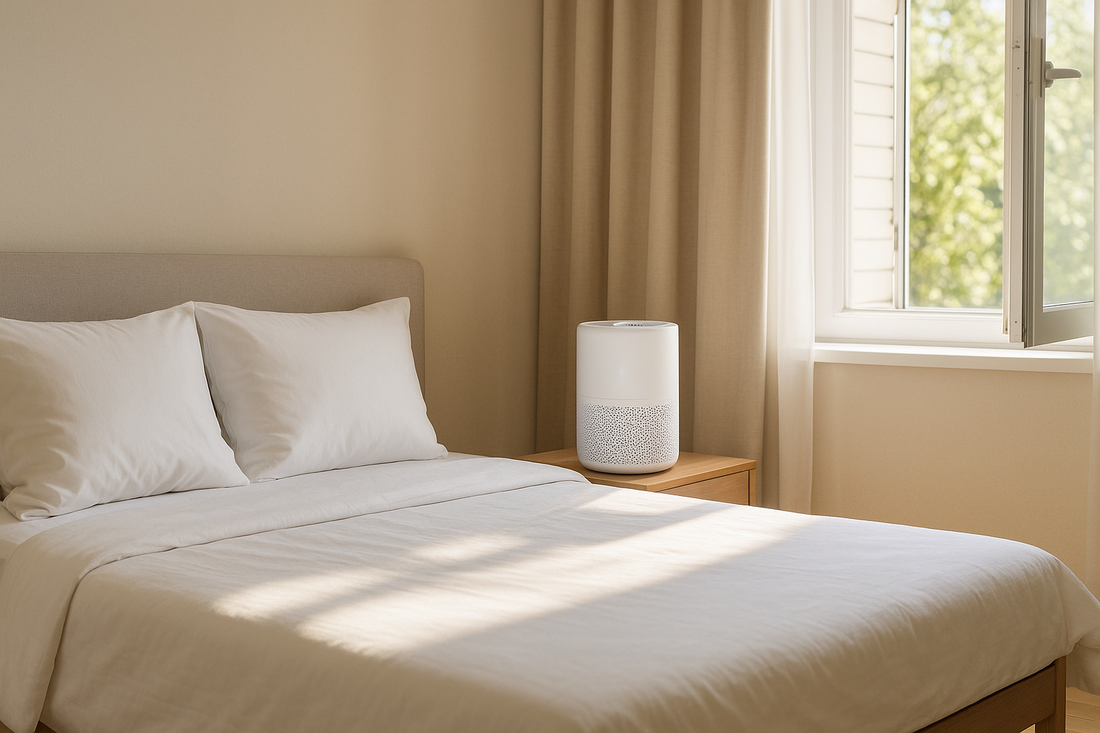
How to Create a Healthier Bedroom Air Environment
I. Introduction
The bedroom is where we spend nearly one-third of our lives, making air quality in this space particularly important. Clean bedroom air is directly linked to deeper, more restorative sleep, improved respiratory health, and reduced allergy symptoms. A healthier bedroom air environment can also help prevent fatigue and support long-term wellness.
II. Understanding Indoor Air Pollution
Even though bedrooms may appear clean, the air often contains hidden pollutants.
• Common contaminants: Dust mites, pollen, mold spores, and pet dander are common culprits. Chemical pollutants such as volatile organic compounds (VOCs) from cleaning supplies or furniture can also accumulate.
• Sources in bedrooms: Bedding and pillows trap allergens, carpets and curtains collect dust, and poor ventilation can allow pollutants to build up over time. Even scented candles and room sprays can release particles that lower air quality.
III. Effective Air Purification Strategies
The most reliable way to improve bedroom air quality is through technology and proper filtration.
• Choosing the right purifier: Air purifiers should be appropriately sized for your bedroom. Compact models are best for small spaces, while larger units may be needed for master bedrooms.
• HEPA filter technology: High-Efficiency Particulate Air (HEPA) filters are proven to capture up to 99.97% of particles as small as 0.3 microns, including dust, pollen, and pet dander.
• Additional cleaning methods: Activated carbon filters help reduce odors from pets or smoke, while UV-C light features can neutralize bacteria and some viruses.
👉 Explore our HEPA Air Purifiers for highly efficient bedroom air cleaning.

IV. Natural Air Quality Improvement Techniques
Technology is important, but natural methods also contribute to a healthier atmosphere.
• Indoor plants 🌱: Certain plants, such as peace lilies or snake plants, can help absorb some airborne toxins and increase natural humidity.
• Proper ventilation 💨: Opening windows for just 10–15 minutes daily refreshes air and dilutes pollutants, even during colder months.
• Humidity control 💧: Extremely dry air can irritate nasal passages and skin, while excess humidity encourages mold. A balanced level (40–50%) is ideal.
👉 Use Humidifiers to maintain proper moisture, especially during dry winter months.
V. Maintenance and Best Practices
Clean air in the bedroom requires ongoing care.
• Regular cleaning routines: Wash bedding weekly, vacuum carpets with a HEPA-equipped vacuum, and dust furniture to minimize buildup.
• Air purifier maintenance: Replace filters according to manufacturer guidelines; clogged filters reduce effectiveness.
• Monitoring air quality: Devices such as air quality monitors provide real-time data on pollutants and humidity, helping you make timely adjustments.

VI. Recommended Air Purification Products
When selecting products for your bedroom, focus on comfort, efficiency, and quiet operation.
• Top-rated bedroom purifiers: These are optimized for quiet performance, ensuring you can sleep undisturbed.
• Budget-friendly options: Portable or smaller units are effective for guest rooms or smaller spaces.
• Key features to prioritize: Look for true HEPA certification, low noise levels (below 30 dB for bedrooms), and energy-efficient modes that can run throughout the night.
👉 Browse our Air Purifiers for Bedroom collection for devices designed specifically for sleep environments.
VII. Conclusion
Improving bedroom air quality doesn’t require drastic changes—consistent habits and the right tools can make a major difference. By combining reliable HEPA filtration, balanced humidity, natural ventilation, and regular cleaning, you’ll create a healthier environment that supports better sleep and long-term wellness. Investing in your bedroom’s air quality is ultimately an investment in your health.
